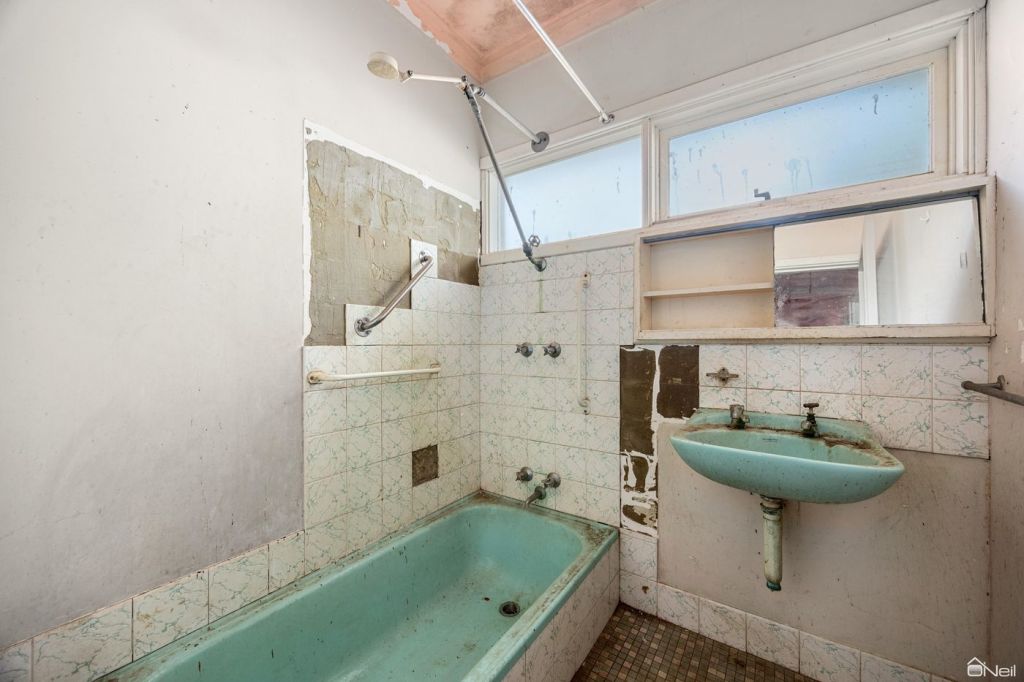Avoid common bathroom renovation defects

Each stage of the renovation, including planning, demolition and installation can throw up costly and time consuming curve balls. These can be avoided with the right preparation and professional help.
Get the right building permits
It is not uncommon for bathroom renovations to involve structural work and changes to utilities such as plumbing and electrical. Particularly in older buildings, worn pipes and rotten timber work often needs to be replaced.
“Bear in mind the big, dangerous difference with bathrooms, unlike kitchens, is that you aren’t laying floors over the top of other materials or just replacing cabinets,” says Wilhelm Harnisch, Chief Executive, Master Builders Australia. He says that because of waterproofing issues, you might need to rip up almost the whole room, especially in older homes.
Any structural changes, such as removing a wall, or changing utilities needs a building permit. According to Cameron Frazer from Ask An Architect, the building advisory service of the Australian Institute of Architects, only a registered building practitioner or architect can get building approval. “The building approval ensures the work being undertaken technically and legally adheres to the Building Code of Australia’s standards and local building regulations,” he says.
Frazer says an interior designer or bathroom designer specialises in the design and fit out while an architect or building designer draws up structural building plans. “The benefit of using an architect is that they also specialise in the design and fit out and can manage the whole process,” he says.
Illegal building work is not only potentially unsafe, your local council can demand it be removed or corrected.

Asbestos exposure
When renovating always be aware of the dangers of asbestos exposure, especially in homes built pre-1984. Talk to your builder or bathroom designer about the potential risks of asbestos and make sure removal is managed by a licensed specialist.
“This is hugely important,” says Harnisch. “DIY renovators are going to be the next wave of people suffering from the effects of exposure to asbestos – there is nearly always asbestos in bathroom walls.”
Faulty waterproofing and tiling defects
Faulty waterproofing is one of the top three building defects across Australia.
“It causes the most structural damage to a house alongside termites, and it also causes a lot of stress to homeowners,” says Nathanael Forster of the Australian Master Tilers Association (AMTA).
Though organisations such as the AMTA are campaigning for greater regulation of the waterproofing industry, in some states waterproofers don’t need to be licensed. Waterproofing should be completed to the AS 3740-2010 Waterproofing of domestic wet areas standard. To make sure your waterproofing is done correctly always use an accredited and licensed tradesperson and get referrals.
“Waterproofing membrane must be compatible with the substrate and the adhesive being used and waterproofing curing times differ from product to product,” says Forster.
Inappropriate substrate preparation and lack of knowledge about tile joint contraction and expansion can cause tile failure.
“All tilers must have a good knowledge of the Australian standards regarding the installation of tiling [AS 3958.1]. This includes the use of the appropriate sized notch trowel for the tile size in question, as per the standard, and a knowledge of substrates and membranes and the use of a completely compatible system,” says Forster. “Following manufacturer recommendations when using any type of materials, whether it be waterproofing membranes, adhesives, epoxy grouts etcetera means a full warranty of work can be given.”

Non-compliant products
According to Harnisch, use of non-conforming products is a growing problem in the Australian building and renovation industry.
“More and more building materials are being imported and in lots of cases the most cost-effective options for clients come from China or other developing economies,” says Harnisch. “It’s much harder to determine in advance if these products comply with Australian standards and regulations around energy and safety – and even if they do comply, whether they are good products. Even the ones that aren’t faulty can be problematic on another basis, like installation.”
Master plumber Dave Moyle says it is essential to check water fixtures and related products carry the WaterMarkTM logo, as this confirms the product complies with the Plumbing Code of Australia and the Australian standards regulating product quality, including health and safety, and warrant that it is fit for purpose.
Moyle also recommends checking the rating under the Water Efficiency Labelling and Standards (WELS) scheme. The more stars a product has the less water it will use, saving you money.
Certified and insured services
It is important to check the accreditation and registration of the trade professionals you engage, and make sure they are insured. This includes architects, designers, builders, electricians, tilers, waterproofers, plumbers and plasterers.
Check with your local state or territory’s licensing body:
We recommend
States
Capital Cities
Capital Cities - Rentals
Popular Areas
Allhomes
More







